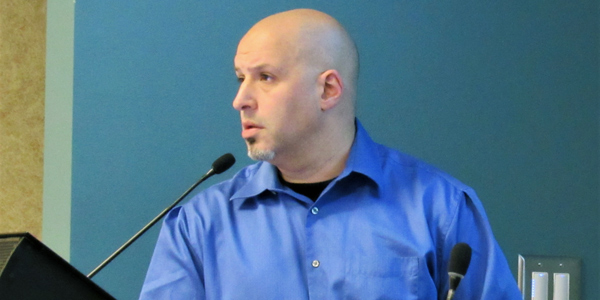By Amanda Durish Cook
CARMEL, Ind. — MISO’s next capacity auction will likely rely on megawatt values and limits similar to those underpinning last year’s auction, the RTO said Wednesday.
For the 2018/19 Planning Resource Auction scheduled for early April, MISO is planning for a systemwide coincident peak load of nearly 122 GW ― a 42-MW decrease ― and a planning reserve margin requirement of 135 GW, which is 177 MW higher, Tim Bachus, MISO capacity market administration analyst, said during a Jan. 10 Resource Adequacy Subcommittee meeting.
The RTO also forecasts a zonal coincident peak of 126 GW and predicts that its 10 zones combined will need 152 GW to satisfy local resource requirements.
“These numbers aren’t final; we do accept updates to forecasts through January,” Bachus said.
2018/19 Transfer Limit
The RTO expects to make no changes to transfer flow limits between MISO South and Midwest for the 2018/19 planning year after FERC recently endorsed its methodology for calculating those constraints.
Manager of Resource Adequacy John Harmon said a feasibility analysis concluded that no adjustment is needed for this year’s regional directional transfer limits, leaving the preliminary South-to-Midwest limit at 1,500 MW (accounting for 1,000 MW of firm transmission reservation offsets) and the Midwest-to-South limit at 3,000 MW (with no firm reservations to reduce the limit).
In November, FERC denied a rehearing of the process for calculating subregional limits request by a coalition of MISO transmission customers that contended the limits were too conservative. (See FERC Upholds MISO Transfer Limit Policy.)
MISO calculates transfer limits between its Midwest and South regions by deducting firm reservations from 2,500 MW of available capacity flowing from South to Midwest and 3,000 MW estimated to be available in the opposite direction. The initial limits were determined in a settlement with SPP that became effective in early 2016.
Harmon said the RTO will release final megawatt values for the two-way limit in February.
2018 OMS-MISO Survey
MISO is also preparing its annual resource adequacy survey with the Organization of MISO States and moving ahead with a new calculation for estimating the volume of future new resources.
Ryan Westphal, MISO resource adequacy coordinator, said the new resource counting methods for the 2018 survey enjoy general stakeholder support.
In accounting for future resources, MISO will tally projects not yet in the three-part definitive planning phase (DPP) of its interconnection queue — and those that have entered the DPP’s first phase — at a 10% completion rate. Conventional and intermittent resources in phase two of the DPP will be counted at 50% and 25%, respectively, increasing to 75% and 50% in phase 3.
Projects still negotiating a generator interconnection agreement will be tallied at 90% completion, while those with signed agreements will be counted as new generation in the survey’s weighted averages. The percentages represent a further refinement of the likelihood values introduced by MISO in November. (See MISO Still Tweaking OMS Survey Assumptions.)
In response to stakeholder questions about the relatively lower completion figures for intermittent resources, Westphal said the RTO has observed that conventional resources have higher rates of completion, “so we’re reflecting that here in the numbers.”
MISO will also apply its capacity credit percentages to the projections, with wind receiving a 15.6% credit, solar receiving 50% and all other resources receiving full capacity credit.




